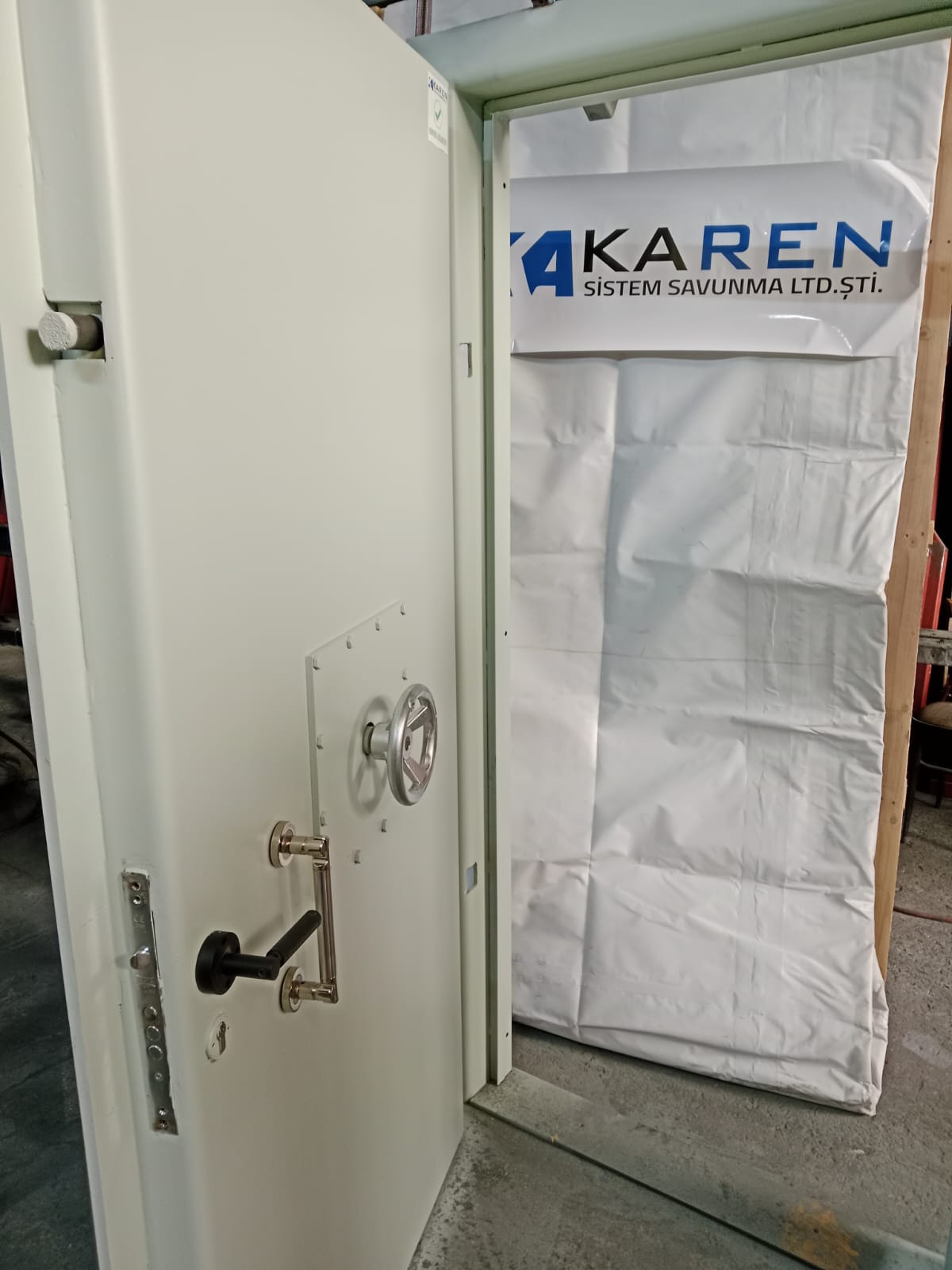Meta Description: What is a blast-resistant door? Learn where these explosion-proof doors are used, the standards they follow, and why they are essential for industrial and military security.
What Is a Blast-Resistant Door?
A blast-resistant door is a specialized security door designed to withstand sudden high-pressure shock waves caused by explosions. These doors are engineered to protect human life, business continuity, and critical infrastructure in facilities exposed to blast risks. Unlike conventional doors, blast-resistant doors include reinforced frames, hinges, locking systems, and seals, forming an integrated safety system.
Standards for Blast-Resistant Doors
Blast-resistant doors are tested and certified according to international standards:
- EN 13123-1 / EN 13123-2 – European standards for explosion-resistant door testing.
- ASTM F2927 / ASTM F2247 – U.S. standards for blast-resistant door performance.
- UFC 3-340-02 – U.S. Department of Defense guidelines for protective design against explosions.
- ISO 16933 / ISO 16934 – International test standards for glazing and transparent blast systems.
Choosing the right standard depends on the risk profile and regulations of each project.
Technical Features of Blast-Resistant Security Doors
High-security blast-resistant doors are manufactured with robust materials and engineering:
- Steel construction: Provides strength against pressure waves.
- Honeycomb infill: Absorbs impact and distributes blast loads.
- Heavy-duty hinges: Prevent door deformation under blast loads.
- Sealing gaskets: Minimize leaks and secondary risks.
- Laminated safety glass: For transparent blast-resistant door applications.
Applications of Blast-Resistant Doors
These explosion-proof doors are widely used in critical sectors:
- Petrochemical plants and refineries – Protection in high-risk production areas.
- Power plants and substations – Securing vital infrastructure.
- Military bases and embassies – Security for strategic facilities.
- Data centers and telecom hubs – Ensuring business continuity.
- Mining and chemical plants – Safety in hazardous industrial zones.
Key Considerations in Project Management
- Conduct a detailed risk assessment and threat analysis.
- Select appropriate standards (EN, ASTM, ISO, UFC).
- Verify test reports and product certifications.
- Ensure professional installation with strong anchorage systems.
- Plan regular maintenance and inspections.
Conclusion
Blast-resistant doors are not just an optional upgrade but a critical safety investment for facilities facing explosion risks. With the right design, certified testing, and expert installation, these doors guarantee maximum protection for people, assets, and operations.
